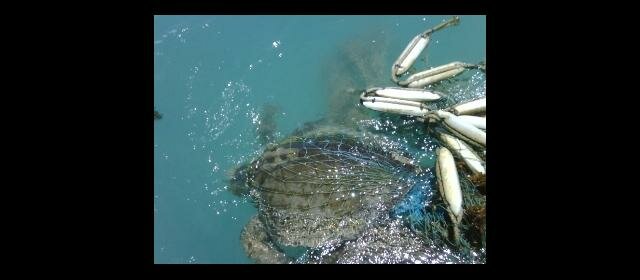Video of Turtle caught in ghost net
Watch Turtle caught in "ghost net" on SeaNet
Abandoned or lost fishing nets have a major impact on endangered marine wildlife and are also a serious navigational hazard to vessels. The vast majority of the "ghost nets" found in the north of Australia come from foreign fishing activities to the north of Australian waters. Seasonal winds and currents see nets and other marine debris drifting at sea or washed ashore on remote northern reefs, islands and beaches across the top of Australia.
Australian fishermen regularly report large ghost nets as navigational hazards and retrieve them where possible. This vessel, working in the Northern Prawn Fishery (NPF), retrieved a ghost net that had been drifting with an adult Olive ridley turtle still alive and well entangled. Having seen the effectiveness of Turtle Excluder Devices (TEDs) introduced to their fishery in 2000 (a 99% reduction in turtles caught), the crew have a clear concern for this vulnerable and protected species.
The NPF is now assisting a research project on the physical and ecological impact of derelict fishing nets on the threatened sea turtles in the Arafura and Timor seas. Crew of the NPF vessels have been equipped with sampling kits to help collect information on turtles that are found entangled in such "ghost nets", which includes data on turtle species and size, location of the nets, and DNA samples to help identify the geographic origin of the turtles.
SeaNet NT is assisting the research by linking the marine researcher with Northern Territory commercial fishermen most likely to encounter ghost nets during their fishing activities.









